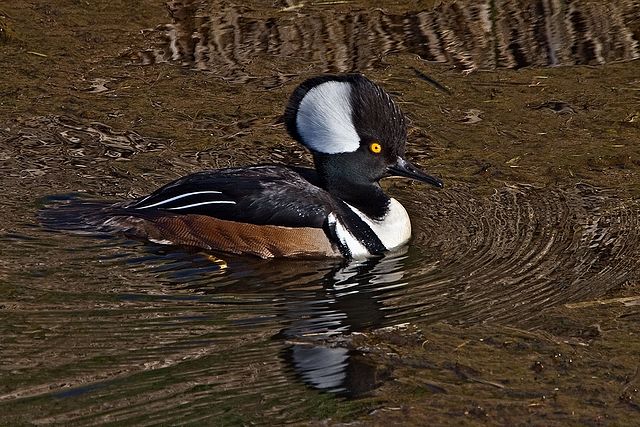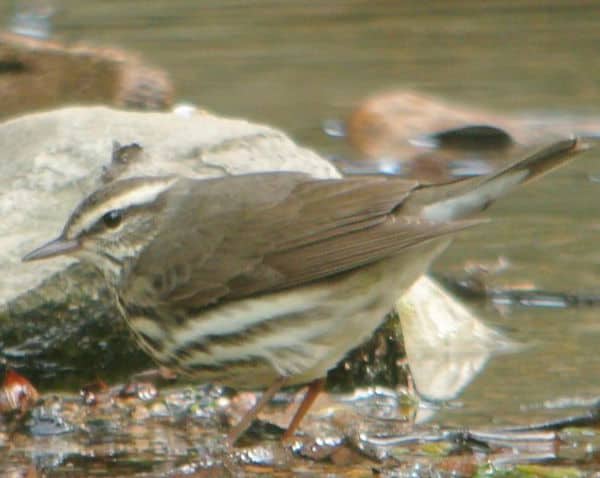What Does a Hooded Merganser Look Like?
Of the three mergansers—ducks with narrow, serrated bills—the hooded merganser is the smallest and has the shortest bill. Both male and female hooded mergansers can be easily identified. The male is in gaudy plumage much of the year.
Its head is an odd shape, either extremely round like a raised mushroom when its crest is raised, or bump-headed when its crest is relaxed. This shape influences the appearance of the dazzling white spot behind the bird’s yellow eye.
With raised crest, the white is like a fat inverted comma; with crest relaxed, it is like a horizontal blob. The male’s bright coppery-orange sides contrast with a white chest pierced by two vertical black bars that bleed into the black back and head.
The female lacks such bold coloration. A rich brown-rust on her head, she is an otherwise brown-gray. A dark bird, she lacks the white throat, bright orange bill, and gray to brown contrasts seen in female red-breasted and common mergansers.
Listen for
Displaying males give a low, croaky how loooong! Females give a short, froglike croak. In flight, the hooded merganser’s wings produce a high whistle.
Find it
The hooded merganser is a hidden treasure of wooded wetlands, lakes, and bays, and is often spotted in small flocks skirting the back edge of fresh or brackish bodies of water. Hooded mergansers occur in many areas also frequented by wood ducks.
This widespread species occupies habitats such as ponds, rivers, creeks, bays, and swamps. Hooded mergansers breed from Canada to as far south as northern Florida and southern Louisiana. The situation changes during migration and winter, when many eastern hooded mergansers winter in the Southeast.
Feed it
While the other two mergansers are primarily fish-eaters, the hooded merganser has a more varied diet that not only includes small fish but also insects, crayfish, and other aquatic creatures. Like other mergansers, hoodeds dive for their food, apparently finding prey by sight.
Nesting Behavior
The female hooded merganser creates a shallow bowl at the bottom of a tree cavity or nest box, using whatever materials she finds there. She plucks down feathers from her undersides to line the nest. Then she lays up to a dozen white eggs, which she incubates for up to 40 days. The mother also attends her young when they leave the nest at a day old. Hooded mergansers often lay their eggs in the nests of other hooded mergansers and wood ducks, leaving their young to be raised by another mother.
WOW!
The hooded merganser can change its head shape depending on whether it raises or lowers its crest.




